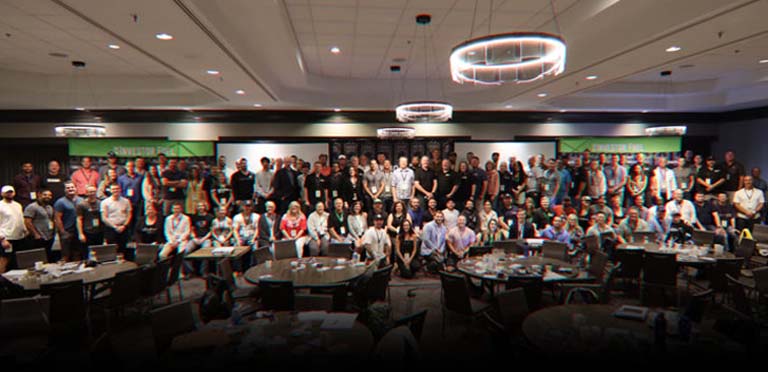
Show Summary
In this conversation, John Harcar interviews Cristy Booher, who shares her journey from wholesaling to flipping houses in the real estate market. Cristy discusses the importance of design in making flipped houses stand out and how she developed design packages to help other flippers streamline their processes. The conversation covers the challenges faced in the flipping business, the significance of thoughtful design, and the benefits of using Cristy’s design packages to enhance property value and appeal.
Resources and Links from this show:
Listen to the Audio Version of this Episode
Investor Fuel Show Transcript:
John Harcar (00:00.662)
All right. Hey, guys. Welcome back to our show. Excited to have you here today. I’m your host, John Harcar. And I’m here today with Cristy Booher. And I hope I said that right. And what we’re going to talk about besides her journey in business and real estate, we’re going to talk about really why it’s important to have a good design for your flip, to really make it have impact and sell. Remember, guys, at Investor Fuel, we help real estate investors, service providers, really
all real estate entrepreneurs, two to five X their business. And we do that by providing the tools and resources and the community to grow your business, to level up and then in turn live the life that you want to live. So Christie, welcome to our show.
Cristy Booher (00:43.004)
Thank you. I’m so excited to be here with you today.
John Harcar (00:45.742)
Yeah, no, I’m excited to talk more about it. I think I’ve had one design person on my podcast. at the beginning, was excited. I don’t know a ton of knowledge about it. So I was more worried about what kind of questions can I ask? And it just flowed incredibly. I look forward to this conversation with you. But before we get there, tell our audience a little bit about yourself, how you got into business and real estate and what brought you to today.
Cristy Booher (01:03.185)
and me too.
Cristy Booher (01:11.386)
Yeah, so my husband and I decided to start a business. We started out by wholesaling and then got into flipping after joining a mastermind and realizing that we were in the wrong seat. needed to look over that we…
John Harcar (01:23.74)
You
Cristy Booher (01:25.328)
We’re going to love the renovation part of it. And if we back up a little bit too, we bought our first house in 2008 in Southern California and it was a foreclosure. So it was still a fortune, but we needed to renovate that entire thing. And so we learned quickly about sweat equity and all the things about construction. Not that you need to know that to be in the business, but it just inspired us to be interested in flipping houses eventually.
If we fast forward 12 years of my husband being in military slash law enforcement, I was in marketing for nonprofits. And three kids later, we decided to pray about something that we could actually do together. Because, you know, we were tired of working opposite schedules. It was night schedule, day schedule, all of that. So that’s ultimately what brought us to real estate. So, yeah, we started in virtual wholesaling, bought a course. I have no idea what course it was. It was
old was probably the cheapest one. This was, well, this was only like eight years ago, but yeah. So, but we had a coach and all of that type of thing. But anyway, we started doing that. Then we figured out about Wholesaling Inc. We started radio ads. We did 10X, 10X TV. So we were and still do about
John Harcar (02:26.288)
And this was back when?
John Harcar (02:31.154)
okay, so this was 2017.
John Harcar (02:47.726)
crawl.
Cristy Booher (02:53.74)
one to four rental projects on average. not a huge production construction, but we are also working with anywhere from a two hour radius. Since we’re on radio, it’s kind of a…
Shotgun approach of where we get the houses, although we love the leads from radio So that’s kind of where we’re at how we developed it, but in our markets. We have a lot of flippers Nashville I’m in the greater Nashville area middle Tennessee. We have a lot of flippers So we quickly figured out that we needed a way for our brand to stand out for our houses to stand out in the market and So we decided to you know, how do we how do we you know increase that?
John Harcar (03:10.392)
You all right?
Cristy Booher (03:38.074)
let’s add some design. Let’s not make it look like the traditional flipped house. But how do we do that with the same budget? And so I dug deep, figured out, you know, how can we do this? And did the research to be able to create a product too for other flippers so that we can all have great design. So that’s kind of where we’re at currently, still flipping houses, but then also have design packages available. And that’s a thing.
John Harcar (04:05.358)
Awesome. Yeah, and we’ll definitely talk more about that so our audience gets a better idea of what you guys offer and what you do. if you’ve watched any of my podcasts, I like to go back. And thank you for that story because it kind of answered my question. Where did that whole flipping real estate part come from? It seems for you came out of necessity with this purchase. But I have to ask, back before that, was there any?
Cristy Booher (04:25.456)
Mm-hmm.
John Harcar (04:30.602)
Influence family member friends somebody in any type of real estate that you had exposure to that planted that little seed because a lot of people don’t go buy a house and say hey I’m gonna fix it up.
Cristy Booher (04:40.596)
Yeah. Well, I grew up with a dad that was in the construction business, so he did fireplaces. And I grew up in the Los Angeles area, and he was working in the Hollywood Hills, you know, putting in fireplaces in all kinds of expensive homes, know, eight fireplaces that cost more than you want to know. So, right. So.
John Harcar (05:01.314)
Yeah, it costs more than the home or some homes.
Cristy Booher (05:04.284)
I always saw him running his own construction business, going out to different projects, that kind of thing. So I was aware of the entrepreneurial world, if you want to call it that. And so that’s what always spurred it in me. And we were ready. We were done with the bureaucracy, to be honest, of police.
life and done with the schedule and the control and all of that. And so ultimately that’s why we were looking for something starkly different from that. How can we control? Yeah, how can and yeah, we’re not we’re talking about beyond pensions, beyond all of that, like how how do we get to somewhere where we can control the freedom for us and our three kids? So ultimately, that’s what got it. And it was probably some infomercial on TV late at night.
John Harcar (05:30.295)
Right.
John Harcar (05:39.362)
So more freedom.
John Harcar (05:57.784)
Hey
Cristy Booher (05:58.692)
really spurred it and the construction experience and knowing that we loved that, that that was something that we had always done together, even though we had worked different schedules for so long, that we could do that together, that it wasn’t a major tension point for us.
John Harcar (06:00.396)
Right.
John Harcar (06:09.102)
Mm-hmm.
John Harcar (06:15.574)
I love it. And please pass this to your husband. Thank you for a service. So you got into wholesaling. How long did it take you to get your first deal?
Cristy Booher (06:24.89)
But you know, I should know the statistic off the top of my head, but it was rather quickly because we were on radio. and this was, we joined radio in 2020. So it was fantastic in our area. The phone was ringing off the hook. And so we got the first deal pretty quickly. think, I mean, honestly, the first day we were on radio, we got eight calls. Yeah, it was so cool. Until it.
John Harcar (06:50.606)
That’s so cool.
John Harcar (06:54.35)
The only problem with that is, right, it’s so great that that’s some great, like, immediate response. The only problem is it sets your expectations up that it’s gonna be like that. That’s the only negative part about it. Right.
Cristy Booher (07:01.916)
Yeah. Yes, exactly. That’s the only negative part.
Yeah, so we quickly did that and I was dispoing. So my husband was acquiring all of the properties and then I was doing the dispo. It didn’t take long before I had a flipper, you know, cuss me out on the phone about, you know, a different thing and it is fine. I was like, it’s okay. This is part of the business. I’m tough. I can do this, you know, but yeah, wholesaling, we did well with wholesaling. We just felt like there was something more for us. So that’s why we switched to flip.
John Harcar (07:24.577)
Right?
John Harcar (07:34.766)
Okay, yeah, I was gonna ask because I know you mentioned that you felt like you maybe weren’t in that right seat flipping was maybe more of that right seat. Why is that? You just did you like more the hands-on stuff? Was it something within that wholesaling process that you didn’t stick with or didn’t like to stick with?
Cristy Booher (07:47.45)
Yeah, think ultimately we were following along with the investors that we were selling homes to and seeing the impact that they were making in communities. We were seeing the money that they were making. were seeing the timelines that they were working on. And so just made it more real to us since we started in the wholesaling. was like, OK, we didn’t really know the flipping side of things.
John Harcar (07:59.682)
Mm-hmm.
Cristy Booher (08:11.088)
So yeah, we started to talk to some other flippers in the business and they’re like, you love the renovation part of things? You love the before and afters? Like, it sounds like you should be flipping. And we’re like, yeah, I think we should do some flipping. So yeah.
John Harcar (08:24.18)
Yeah. So you joined Seven Figure Flipping and that was your kind of mentor coaching type of thing to learn the process of flipping house.
Cristy Booher (08:32.58)
Yes. Yes.
John Harcar (08:34.38)
What were some of the struggles when you started with it?
Cristy Booher (08:38.672)
with flipping. So some of the struggles when we started flipping was obviously figuring out my role versus my husband’s role. What do we do within the business? That was a big pain point because we all, we both felt very responsible for the outcome. And so we both wanted to be very involved. Finding contractors was tricky. Especially, like I said earlier, we were
you was like possible two hours apart from each other. So we were finding new crews at every house. We weren’t typically using the same crew. And so we became really good at searching Facebook and, you know, groups. Yes, recommendations that people were making for contractors. So we got really good at that. We got really good at communicating. But obviously, those things are hard to figure out at the beginning. What what details do I need to know about? You know, all of that is a huge learning curve at the beginning.
John Harcar (09:18.638)
Finding Cruz.
Cristy Booher (09:37.328)
even if you know construction or if you don’t, those things are just a big deal. So yeah, just kind of finding our places too, I think is a big thing. And after some therapy and finding it all, it was great. My husband is very hands-on, so he is able to do a lot of the construction elements. So he did that.
John Harcar (09:59.543)
Nice.
Cristy Booher (10:00.964)
Early on he did that and then as our company grew we said, okay, you need to step back, you can oversee those things but we can’t, it started holding back on my product management side of things like, I’m like, okay, I gotta get you out of the way so that we can these guys in here, the different crews in, overlapping them more and that kind of thing. So just kind of learning the flow of construction, all of that was really important at the beginning.
John Harcar (10:16.173)
Yeah.
John Harcar (10:28.13)
What was a, and I always ask people who flip this, what was on your first flip, because we know the first flip is never goes perfect, what was one of the biggest like oops that you did on the first flip or maybe one of your first couple flips?
Cristy Booher (10:41.933)
it’s always…
not inspecting the house thoroughly, right? You learn that you learn how to properly inspect a house once you’ve opened too many moldy walls, you know, like you you just learn the signs. And so yeah, that that is something that we learned quickly. We don’t we at the beginning, we were just so excited to flip a house. We were so excited to get it. Obviously, we were we were doing our due diligence of the market and all of that. But I think a lot of the times we were just expecting the house to
John Harcar (10:55.118)
hahahaha
Cristy Booher (11:14.15)
okay I mean you know you watch on HDTV of all these catastrophes that happen but you think that’s just HDTV that’s not gonna happen in real life well it happens in real life and yeah so yeah yeah
John Harcar (11:19.48)
Mm-hmm.
John Harcar (11:26.37)
Yep. Never when you want it to either.
It always happens when the budget’s low, the team is, or your crew is unavailable. It’s always some time when it’s never the most convenient time. That’s awesome. So where did you see the need for the design piece? mean, was it from your own personal flips or was it more of seeing what investors are putting out there and how it could better benefit them?
Cristy Booher (11:39.724)
Yeah, exactly.
Cristy Booher (11:58.158)
Yeah, I think both. To be honest, I was seeing a need for the design elements because of what I was seeing in the market, what I was seeing other flipper friends or, you know, just houses that we were seeing on the market that just, you know, they use the same granite, they use the same boob lights, they, if I’m allowed to say that, they’re, you know, and it’s like, why aren’t we doing more? I mean, I feel the same way with new builds.
John Harcar (12:17.442)
Yeah, yeah.
Cristy Booher (12:24.52)
if it’s basically the same price point, why aren’t we adding more design? Why aren’t we allowing this to be something that is more thoughtful and more design friendly so that the customer or the client can come in and just enjoy their home right away instead of wanting to change everything first? So I also was sitting down with a bunch of peers.
John Harcar (12:42.22)
Right.
Cristy Booher (12:46.172)
and flippers in the business that were just saying how much of a pain it was to figure out the design. Like they were not…
forward thinking on the design elements and then they would be getting calls from their contractors or their project managers, you know, while they’re sitting in car line or whatever, trying to like figure out these details on the fly. And it was always just a frustrating point. Or they were waiting until their wife put their kids to bed and then asking them to pick out lights for the house. Like who wants to do that? Nobody wants to do that. So I am all for like getting that time after the kids go to bed back and having a plan in place, like having a design plan.
John Harcar (13:04.354)
Mm-hmm.
John Harcar (13:14.338)
Right? Right.
Cristy Booher (13:25.982)
that way you can hand the contractor all of the details and walk away from it and say, okay, they’re all there. I don’t need to make any more decisions about this. They’re all made for me. So I was just seeing those pain points of them having to make decisions on the fly, not sure if they were the right decisions for the house, not being thoughtful of the cohesive feel of the house, all of that. So yeah, that is ultimately.
John Harcar (13:37.261)
Right.
Cristy Booher (13:53.914)
why I decided to say, okay, let’s share our system and our design.
John Harcar (13:58.222)
For sure, yeah. mean, were you also getting people saying like, hey, I love your designs. love, know, we’re like getting a lot of that feedback to where you thought like, well, hell, why don’t I just.
Cristy Booher (14:03.61)
Thank
Cristy Booher (14:08.14)
Yes, absolutely. And I was having, you know, a lot of people, like those same Pierce Flippers asking me, hey, do you like this light? Would you put this in your house? What color walls would you paint this? You know, those types of things. Yes.
John Harcar (14:19.212)
You became the expert.
Cristy Booher (14:22.108)
And so I was like, okay, this is good. Like I knew that I loved my designs. I knew that our clients, our buyers, our real estate agents, I knew that they loved to show our houses. So I was like, okay, this gotta be something that other people can use. So, four.
John Harcar (14:39.092)
sure and you don’t do the agreeable grays do you? Okay.
Cristy Booher (14:42.716)
Well, agreeable way on trim.
John Harcar (14:46.454)
Okay, all right. Not like the whole overall, it looks like a hospital room, agreeable gray, why yeah, okay. I love it.
Cristy Booher (14:51.898)
No. No. It’s a good exterior color. Absolutely no more repose gray. We gotta move into our repose gray, okay?
John Harcar (15:00.366)
What type of reception did you get when you started marketing this business? Sammy, did you have a lot of reception from your local investors and whatnot in your market?
Cristy Booher (15:11.068)
Yeah, it’s still relatively new, but at the same time people are wanting it because of what you have to pay a normal designer. Like the average cost by hour is $175 an hour. And the packages that I put together, I’m putting at least 40 hours into because it involves so many details. That’s seven grand. Like no flipper wants to.
put in a seven grand line item into their budget. Nobody wants to do that, right? Even if it was your annual cost for a designer, that’s still expensive for some people. So none of ours are that expensive. I wanted something that was approachable, that kind of a thing. But yeah, people were asking me. I wasn’t even putting it out there as much. And then I started having guys.
contact me and say, I don’t have time to design this house. Will you do it for me? Yeah. Here, pick one of these packages. Go with it. So.
John Harcar (16:05.624)
So let’s talk about those packages. Like what are all the different things that you offer? Like how does it vary? What are maybe some, you know, some just blanket costs.
Cristy Booher (16:13.518)
Yeah, like I said before, I’m the project manager on our renovations, so I know all the details. So it’s not something that’s just like easily handed over, like, hey, do this, this, this, this, this. It’s complicated. So I created a spreadsheet that is huge, right? So first, of course, you get a design board because you have to be able to see what you’re buying.
You have to be able to see the elements in one place. us visual learners, you want to see what the kitchen’s going to look like and what the bathrooms are going to look like, that kind of thing. But then you also get a very detailed spreadsheet with anywhere from, depending on the level of the package, 130 to 210 line items of design-specific details.
Then I included a tool that we use that we’ve had amazing success with and that’s a tile install instruction sheet. So for every tile selection that is included in that package, you get an instruction sheet that you can tape up on the wall that shows a picture of how they’re supposed to lay it, the specific tile, the grout color, the grout size, and any niche details, curb details, all of that kind of stuff. So it makes it…
super, super easy, but obviously there’s some variation within our levels just from what is needed. After talking to people, what would be helpful? How do I break this up? Because you can’t just have one design package that’s going to fit every single house. Every house is a little bit different, but then also the entry point is a little bit different. So I decided to break it up into entry level, mid level, and high end.
John Harcar (17:42.71)
every house right yeah.
Cristy Booher (17:53.668)
So that way, there’s just different details that need to be included in that. I don’t know, is it okay to share pricing?
John Harcar (18:01.824)
Yeah, mean, if you want, mean, if not, we’ll just we’ll lead them to your website either way, but it’s up to you.
Cristy Booher (18:06.454)
Okay. So at the entry level, it’s basically, we all know what an entry level house is, right? A house that is beautiful, but it’s also something that the buyer can make their own. So that design package runs at $16.97.
Then the mid-level, they’re moving on from the entry-level home, the buyer is, and they want something a little bit more established feeling. So we’re going a little bit more details. Those packages are right, right, exactly. Higher price point of your ARV, that kind of stuff. And so those are $26.97. Sorry, had to look at my notes to make sure I didn’t mess that up.
John Harcar (18:35.726)
Maybe a nicer neighborhood. Yeah.
Cristy Booher (18:51.61)
And then the high end are where buyers are expecting basically custom details. They want woodwork, they want different colors, they want different color cabinets in the kitchen, they want higher end faucets and that kind of stuff too. So that package is 49.97. Yes, 49.97. And that’s just, you look at it online, you look at it on our website, you look through and see if you like it, you purchase it and you immediately get an.
an email with the file. So it’s something that can be implemented that day, literally, not to sound dramatic, but it is. The spreadsheet is editable for you, you know, and if you don’t have an Excel on your computer, it easily goes into Google Sheets, all of that kind of stuff. We’ve thought about all the details. I don’t need to bore you with all the details, but it’s exciting to see. I know that this is going to continue to help other people’s businesses just grow and implement the system.
John Harcar (19:45.582)
I love it.
Cristy Booher (19:48.9)
Those design packages also include like the door stops. Okay? We don’t really think about door stops being part of design. But if they’re a different color than the doorknobs or the hinges, it’s going to look weird. People are going to think that’s all because they’re used to it all being together. But do you want to have to make that decision? No, not really. Right? So all the lighting, all of that. I had a flipper friend say to me the other day, he was like, but you can’t find nice lights at Home Depot. And I was like, you can’t.
John Harcar (20:01.998)
That’s
Cristy Booher (20:18.906)
Why can’t you? He’s like, Home Depot just has like crappy stuff, doesn’t it? And I was like, no, have you looked online? Have you gone into the store and looked? I’m like, there are great lights there. don’t… Right, I’m like, you need to put away this, you know, this thought of Home Depot isn’t nice enough for my flips or whatever it is. yeah, just breaking the mold on that kind of stuff too and definitely just encouraging good design. I love it.
John Harcar (20:27.704)
They got some pretty nice stuff.
John Harcar (20:34.606)
Stigma. Right.
John Harcar (20:47.47)
That’s awesome. And those aren’t cheap numbers by any means, but what benefit does it give to the, or what’s the benefit of the flipper, rehabber using you versus doing all that stuff on their own?
Cristy Booher (21:01.444)
Yeah, so if you do this on your own, you obviously have to make those hundreds of decisions. You have to figure it out. You have to go into the store. You have to search online. Like I said, minimum, yeah, time. There’s so much time put into this. And that’s why most flippers don’t have good design. So this is something that they can implement and they can use it on house after house after house, just like they’ve been doing, but it just is a nicer product, right? In this market right now, we’re not, everything’s not flying.
John Harcar (21:10.958)
time.
John Harcar (21:28.322)
Yep.
Cristy Booher (21:31.228)
Right? You can’t just sell anything right now. And so my husband and I were like, we just really feel like this has helped us continue to sell houses and this is going to help other flippers continue to be profitable in this market specifically because it makes your house stand out. You’re not using the same black and white granite that everybody uses. You know, you’re using stuff that people actually like to have in their house and they don’t feel like they have to switch it out the moment they move in. You know? So, so yeah.
John Harcar (21:58.668)
No, 100%.
Cristy Booher (22:01.039)
I see.
John Harcar (22:02.818)
Very cool. Thank you so much for coming on and share that, you know, like I said, that’s what I about what I do. I get to learn all these new things and yeah, I mean, I’ve ran in or not I personally, but I’ve talked to lot of guys like in our mastermind that, the design issue is something that, you know, people don’t want to necessarily leave the money out, but the time it frees to be able to do the other stuff is well worth the dollar. You mentioned you might have a coupon code or how do folks get a hold of you? How do folks reach out to you and
Cristy Booher (22:24.176)
Yeah. Yeah.
John Harcar (22:30.432)
And if something you said resonated with them, talk more about it.
Cristy Booher (22:34.832)
Yeah, so our website is designboards.store. Designboards.store. all of the details are on there, but I do have a coupon code that is investorfuel, one word, and that will take off $300. So I hope that that will benefit, you know, make it an easier entry point. And I know I love buying things with coupon codes, so why not share one as well? we’re also…
John Harcar (23:00.184)
Why not? Who doesn’t like to save money?
Cristy Booher (23:03.478)
Right, exactly. We’re also on Instagram so you can see a lot of the designs in live houses. Like I have used all of these designs in actual homes so you can see that as well on our Instagram which is at anchored.home. Anchored.home. So that’s where you can find us.
John Harcar (23:21.912)
Cool, and we’ll put all that in the show notes, that coupon code and everything, guys. So if you have interest, check it out. Save some money. If you want to reach out and talk design or maybe have questions, please do. Kristy, thank you so much again for coming on here. You shared a lot of good stuff. And guys, I hope you all enjoyed the show as well. And we’ll see you on the next one. Cheers.
Cristy Booher (23:38.33)
Yeah, thank you.
Cristy Booher (23:44.134)
See ya.






